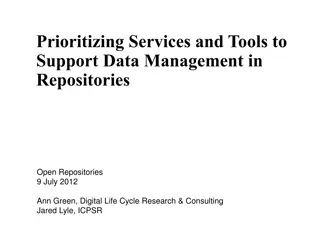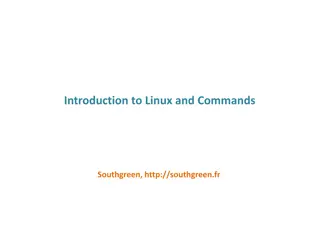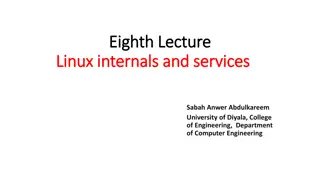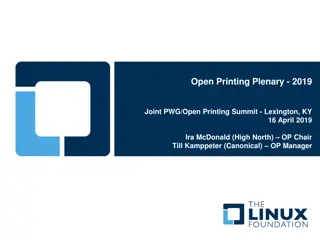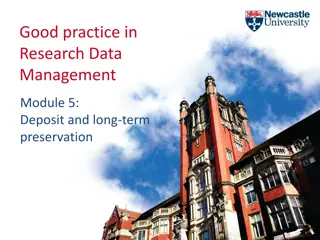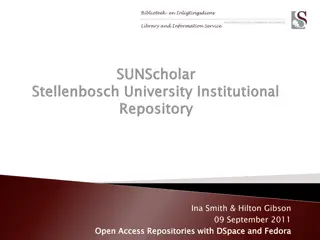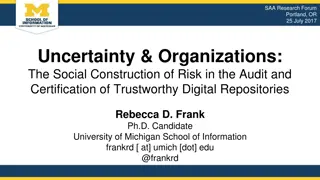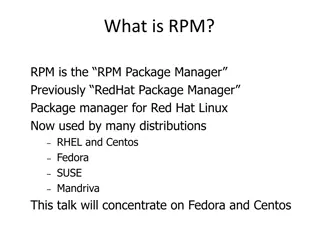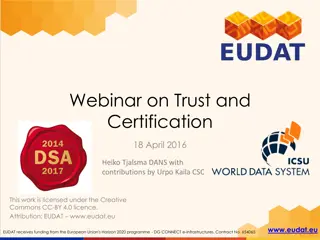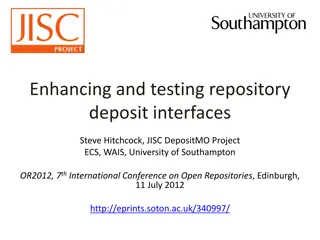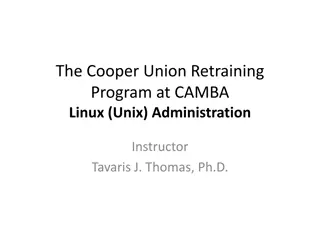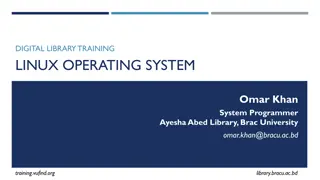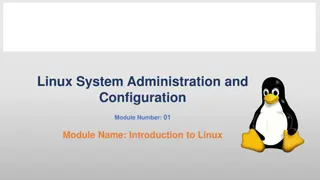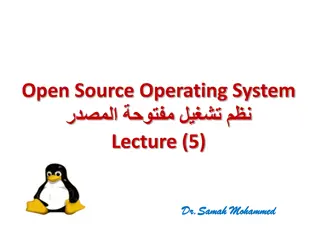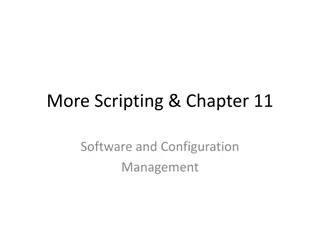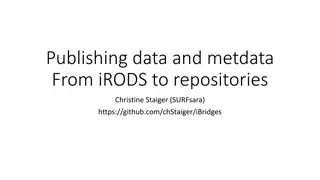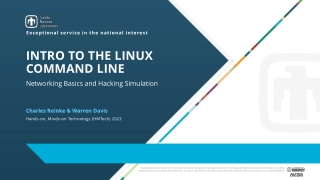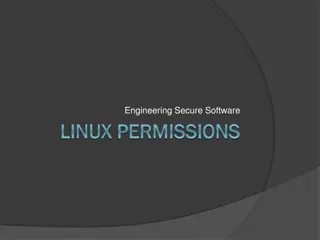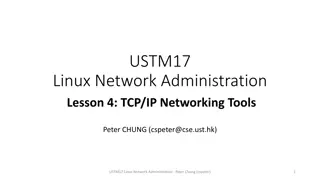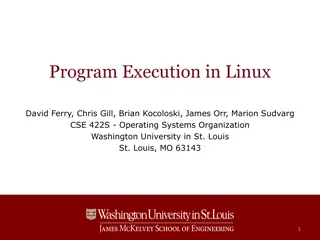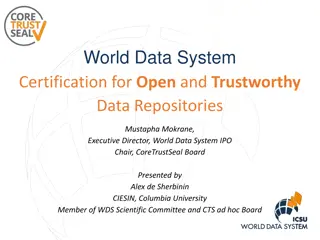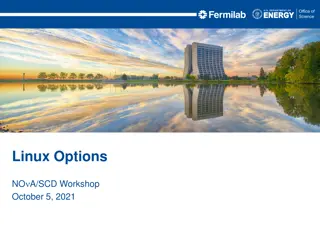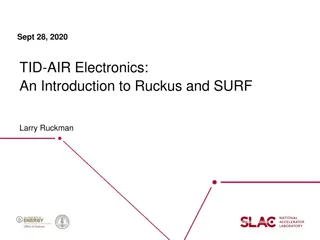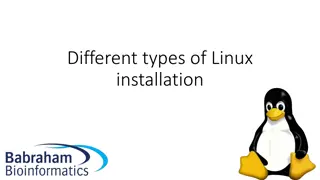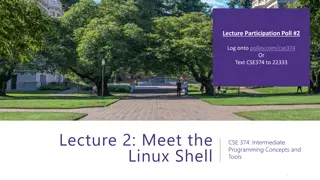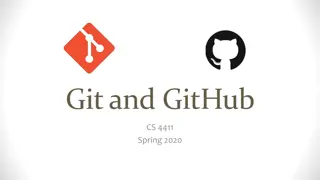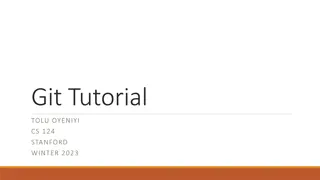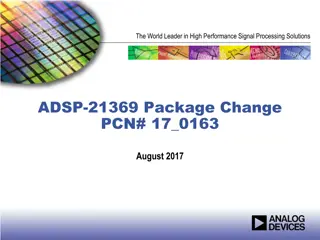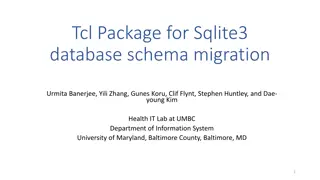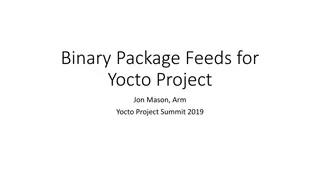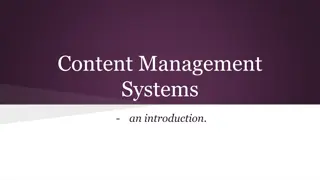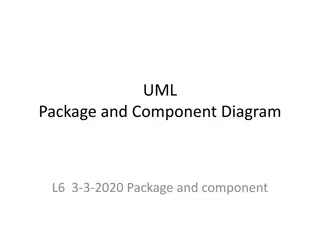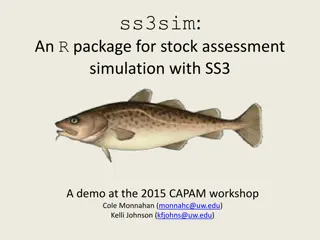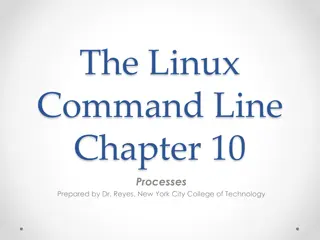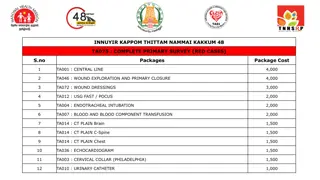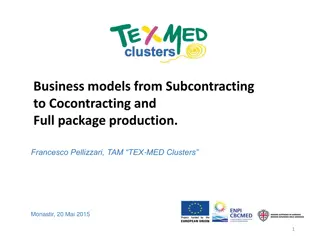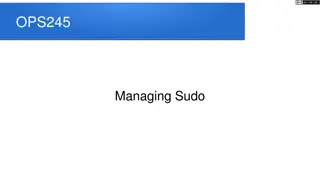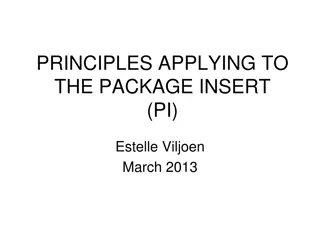Understanding Linux Package Management and Repositories
Explore the fundamentals of Linux package management and repositories, including the concept of packages, Debian package management, repository structures, and tools like APT and Aptitude for efficient package handling. Learn about the history of Debian, package formats, and the role of repositories in organizing and distributing software packages.
Download Presentation

Please find below an Image/Link to download the presentation.
The content on the website is provided AS IS for your information and personal use only. It may not be sold, licensed, or shared on other websites without obtaining consent from the author. Download presentation by click this link. If you encounter any issues during the download, it is possible that the publisher has removed the file from their server.
E N D
Presentation Transcript
Linux Repository Management 421: 2023 1
What is a package? Debian package management What is a repository? APT Front-ends for APT Red Hat Package Manager Introduction Low level coding in RPM YUM ( Yellowdog updater modified) Dandified YUM (DNF) 2
Packages A package is simply a collection of files These files typically documentation and metadata necessary for the installation of the desired software on an OS. These packages can be installed manually (shown in lectures), or you can use a tool to automate the process of installating, updating, configuring, and removing said packages via a package manager (examples will follow). Each linux distro has it's own package manager and package formats: include executables (binaries), config files, Debian: .deb Arch: .pkg.tar.xz 3
Start of Debian Debian 0.x versions in 1994, a few dozen people working on the project In 1995 the number of developers grew, and as such dpkg had it's first public release in order to help each developer install and maintain all their packages after a base installation. dpkg essentially unpacked and installed the files of a package. dpkg written in C and Perl, open source project maintained at gitlab. 4
Repositories A Debian repository contains the binary or source packages in a directory tree with many additional files such as checksums, indices, singatures, etc. Different releases: Stable, oldstable, testing, unstable Each release is divided into: main, contrib, non-free Debian mirrors globally 5
APT Released in 1999, Advanced Packaging Tool, mostly written in C++, is the set of various tools that combined form the package apt. APT is a front-end to dpkg, designed to make the process of package management much more user friendly. apt manages relations between packages, meaning that handling dependenices is much easier (apt keeps an internal database of the installed packages). There are mainly three CLI programs that use the APT library: apt apt-get 7 apt-cache
Aptitude Aptitude is a CLI front-end for various apt libraries, it uses the library Ncurses to become more user friendly. 8
Synaptic Synaptic provides a graphical interface, and acts as a front-end for apt. 9
NALA 10
Red Hat Package Manager Created by Marc Ewing and Erik Troan in 1997 Became a standard for package management in various Linux distributions. A powerful tool for installing, updating, and removing software packages Written in C programming language 11
Low-Level Coding in RPM Direct System Calls The C language enables fine-tuned memory management, crucial for the performance and stability of RPM includes algorithms for checking dependencies written in C for efficiency RPM incorporates cryptographic verification of package integrity 12
Examples of RPM commands: Installing an RPM Package Checking an RPM Signature Package Removing an RPM Package 13
Created between 1999-2001 Written in Python a front-end tool that uses RPM at its core adds functionality to the RPM's capabilities. RPM deals with the low-level operations of package management, while YUM provides a higher-level interface Developed to simplify package management in Red Hat and its derivatives like CentOS and Fedora. 14
Key Advantages of YUM Automated Updates Ensures that all packages are updated to their latest versions, maintaining system consistency Easier Package Management User-Friendly Interface Higher-Level Dependency Resolution Automatically resolves dependencies for packages, a feature not natively present in RPM 15
YUM examples Install rpm packages (1 or more packages) Remove rpm packages Dependency list 16
Dandified YUM DNF is the next-generation version of YUM, designed to improve and replace YUM in Fedora and other RPM-based distributions. Faster and more efficient in resolving dependencies Cleaner, well-structured codebase (easier to maintain and extend) Offers flexibility in managing different software versions and streams. 17
DNF Features and Functionality Automatic Dependency Resolution (improved algorithms than YUM) Robust Package Group Handling (Simplifies the installation and management of software groups) DNF can be extended with plugins, providing additional functionality and customization options that were not as robust in YUM. Provides a well-documented API, which is useful for developers who want to interface with the package manager programmatically. 18
Thank you 19
https://www.scaler.com/topics/cyber-security/package-management-in-linux/ https://www.debian.org/doc/manuals/project-history/detailed.en.html https://salsa.debian.org/dpkg-team/dpkg https://wiki.debian.org/DebianRepository https://www.debian.org/mirror/list https://wiki.debian.org/Aptitude https://www.thegeekdiary.com/yum-command-examples-in-linux/ https://access.redhat.com/documentation/en- us/red_hat_enterprise_linux/5/html/deployment_guide/c1-yum https://www.tecmint.com/20-practical-examples-of-rpm-commands-in-linux/ 20


